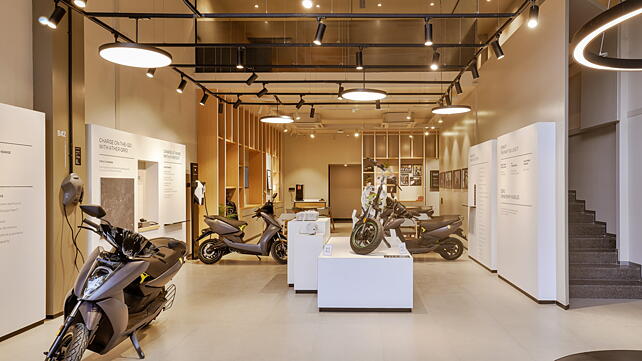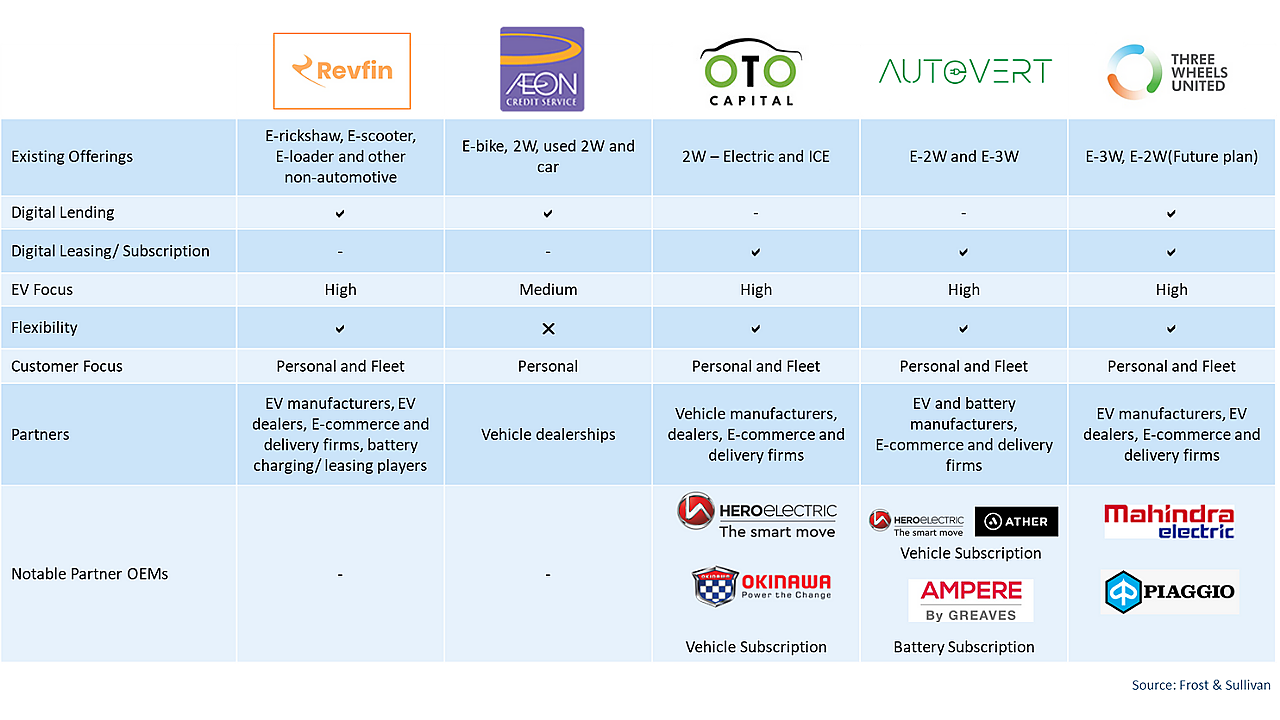
The electric two-wheeler market in India has been a hotbed of activity over the past 24 months across multiple fronts. While on the one hand, the extension of FAME II incentives/subsidies has given a much-needed boost to the sales of electric two-wheelers (E2Ws), the other key development has been the introduction of new affordable models from two-wheeler (2W) OEMs across different segments.
Additionally, with OLA Electric showcasing its upcoming E2W model, the competition between mainstream OEMs and new mobility players will only become fiercer.
Let us take a look at some of the key influencers in the growth of the E2W market in India.
1. Market growth fuelled by affordability and infrastructure spend
Frost & Sullivan expects the E2W market to be about 2.3-2.4 million units annually, by FY25. This represents about 10-11% of the total 2W market annually. This is significant growth from where we are today, with E2W accounting for just about 2% of the total 2W market. The key growth drivers for the E2W market over the next five years are expected to be:
- Regional/central government incentives and subsidies driving penetration and adoption not only in Metro cities but also Tier II and III cities in the country.
- Expansion of dealer footprint across the country, which is expected to increase three times to about 500 by FY25 from the current 150 exclusive outlets.
- Growth in the e-commerce business and adoption of E2W by “green fleets” to establish environment-friendly credentials.
- Rising fuel costs in the short to medium term, which is also likely to hasten the arrival of the tipping point towards e-mobility adoption.
Further, with private Charge Point Operators (CPOs) investing in developing public and private charging infrastructure across the country, the ‘visibility’ of charging points is expected to address one of the key challenges in the minds of consumers – range anxiety and availability of charging stations. CPOs are also looking to partner with regional/local distribution companies (DISCOMs), thereby ensuring a steady and uninterrupted supply of reliable power across cities and high-usage areas.
2. Customer perceptions and acceptance
Frost & Sullivan recently carried out a customer survey within the E2W market in India, and some of the results gave us an insight into what the average consumer thinks and perceives about E2Ws. Here are some of the key findings from the study:
- About 70% of the respondents interviewed said that although the initial purchase cost of E2Ws was higher than conventional engine models, the eventual per km running cost would be much lower, which made them choose an E2W.
- 67% of the respondents felt that long-term maintenance costs would be significantly lower owing to lesser moving parts.
- While 57% said E2Ws have lesser noise and vibration, 45% felt the acceleration and pick-up were better than conventional engine models.
- Only 30% of the respondents felt there were adequate charging stations, and an even lower 20% felt that E2Ws are suited for long-distance travel.

While some of the perceptions are based on reality and available infrastructure, other key decision-making criteria need substantial awareness and education, both from OEMs and policy makers if E2Ws are to become a viable and economically sustainable mode of transport.
3. New business models driven by “usership”
The transition from “ownership” to “usership” has already seen traction in the passenger car segments, with the advent of subscription models. E2W OEMs too are experimenting with new business models that make acquiring an E2W more affordable and attractive. The initial purchase cost for an E2W is considered the biggest barrier for an E2W with comparable performance to conventional 2Ws, which can be in the 1.6-2.0 times range.
New business models such as subscription, battery swapping, vehicle-as-service (VaaS), and battery-as-a-service (BaaS) are expected to take the battery cost out of the equation, making it financially attractive to acquire an E2W. These business models are not only attractive for individual private buyers but also for fleet operators like Zomato, Swiggy, Big Basket, etc., who have a predictable route of operation daily.
These new models can help them plan investments, which include leasing batteries and changing them as needed without the added cost burden. As a next step, we are also likely to see pay-as-you-use models, which make it flexible for the user to pay only according to the usage of the vehicle.
Furthermore, with the younger generation not keen on buying/owning vehicles, flexible ‘usership’ based models are expected to drive adoption across multiple vehicle segments, including E2Ws in India.
4. Collaborative ecosystem including finance and TCO
Creating a sustainable and economically viable E2W ecosystem in India calls for a collaborative ecosystem, including even non-traditional automotive players, such as data analytics companies, finance and insurance players, and even healthcare service providers.
While traditional financing models are still valid, new emerging finance models such as digital leasing, digital lending, and flexible payment models are driving e-mobility adoption. Some of the best practices adopted by industry players are benchmarked in the table below.

Important to note is the emergence of regional/local/microfinance players, who are beginning to partner with E2W OEMs to offer flexible finance options to both private individuals and fleet operators. These collaborations not only offer customer-centric finance options but also offer ‘usership’ based options, including subscriptions. Partnerships further include charging infrastructure players and the dealership community to create a robust well-rounded ecosystem to make E2W adoption attractive and popular.
In conclusion
The success of E2W adoption in India is going to be driven by a multi-pronged approach. Subsidies and incentives are necessary to kick-start large-scale adoption in India. However, long-term sustainability can only be achieved by a simultaneous focus on new business models and investments in technology that make critical aggregates like batteries and motors affordable. The future for E2Ws in India is very bright as young India is very keen on embracing non-conventional ways of mobility.
About the Author: Kaushik Madhavan is Vice President, Mobility Practice at Frost & Sullivan.
NB: This article is a part of our Knowledge Series, authored by experts from Frost & Sullivan. All images are representational in nature.